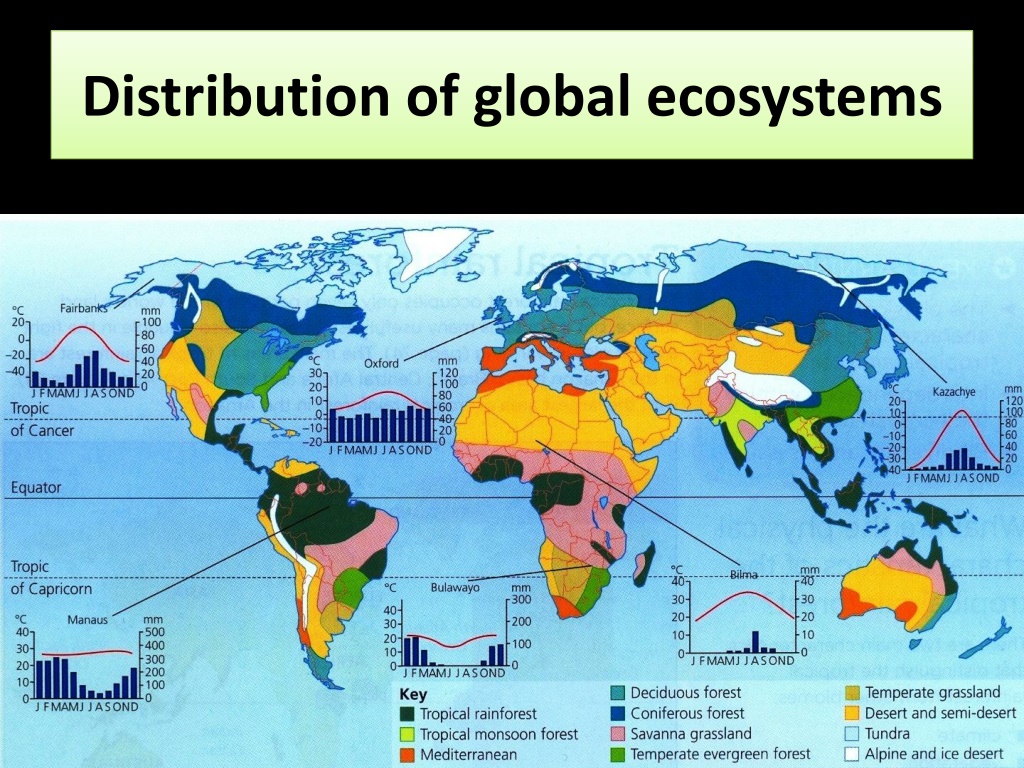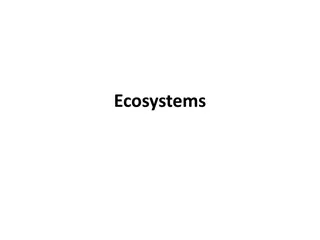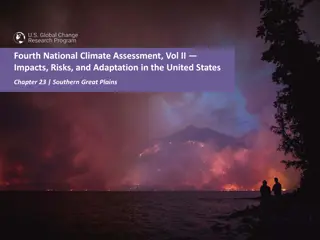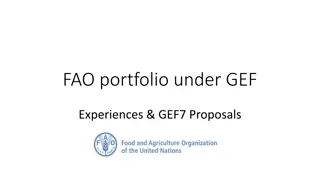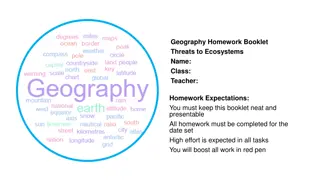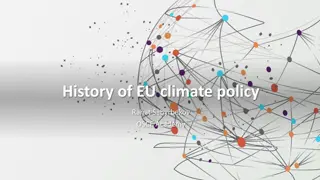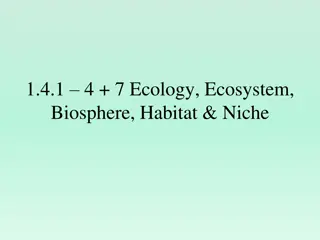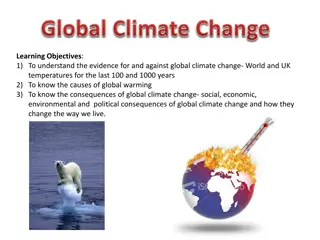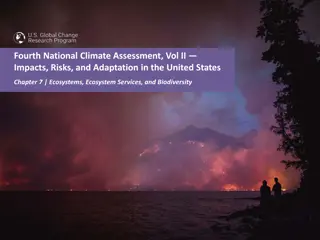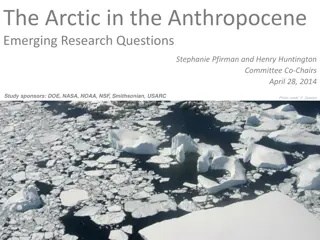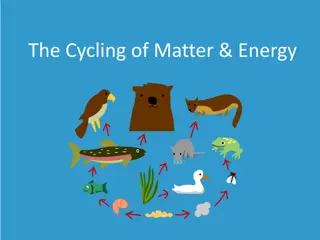Understanding Global Ecosystems and Climate Influences
Global ecosystems are defined by dominant vegetation types and are influenced by factors like climate, atmospheric circulation, altitude, relief, and ocean currents. The distribution and characteristics of ecosystems are shaped by global atmospheric circulation patterns, creating distinct belts of vegetation across the world. Jet streams, high-altitude air currents, also play a role in weather patterns. This lesson aims to explore how these factors impact ecosystems and their biodiversity.
Download Presentation

Please find below an Image/Link to download the presentation.
The content on the website is provided AS IS for your information and personal use only. It may not be sold, licensed, or shared on other websites without obtaining consent from the author. Download presentation by click this link. If you encounter any issues during the download, it is possible that the publisher has removed the file from their server.
E N D
Presentation Transcript
Introducing global ecosystems Your goals for this lesson is to understand 1) how climate explains the distribution and characteristics of global ecosystems 2) The impacts of global atmospheric circulation on global ecosystems 3) The impacts of altitude, relief and ocean currents
Global ecosystems Are defined mainly by the dominant type of vegetation that grows in the region, such as tropical rainforest or tundra. Form broad belts across the world from west to east, parallel to the lines of latitude. Their climate and characteristics are determined by global atmospheric circulation Variations in these west-to-east belts of vegetation are due to factors such as ocean currents and mountain ranges.
Factors which affect global ecosystems 1- Global atmospheric circulation pages 22/23 Watch (to seasons) Watch (to seasons)
The air that has risen in the convection currents stops when it reaches a layer in the atmosphere called the tropopause. It cannot continue to rise, so is forced to flow Pole wards. Stable, clear skies occur here, with few clouds. It is dry because most water vapour was dropped as convection rainfall near the equator. This creates regions known as sub-tropical anticyclones. As air flows away from its main heat source, the equator, it sinks. This causes thick clouds and torrential rain. (Rising limb of the Hadley Cell.) Global atmospheric circulation Cooling makes the air denser, and much of this denser air sinks back towards the earth and 30 north or south of the equator. (Descending limb of the Hadley Cell.) The hot air contains large amounts of water vapour, evaporated from the ground or transpired from vegetation. This heated air rises in the form of convection currents and then cools, creating an area of low pressure known as the ITCZ. The ITCZ - Inter Tropical Convergence Zone - is an area of low atmospheric pressure that forms where the Northeast Trade Winds meet the Southeast Trade Winds near (actually just north of) the earth's equator. The sun s rays are most concentrated here leading to the heating of the air lying above the ground surface.
Jet streams are fast flowing, relatively narrow air currents found in the atmosphere around 10 kilometers above the surface of the Earth. They form at the boundaries of adjacent air masses with significant differences in temperature, such as the polar region and the warmer air to the south. The polar jet stream can travel at speeds greater than 100 miles per hour (160 km/h). Here, the fastest winds are coloured red; slower winds are blue. Watch Watch
Read, label, annotate Read the handout on characteristics of global ecosystems. Label the Figure of the atmospheric circulation in the northern hemisphere with the name of the ecosystems. Draw an arrow to show their location. Annotate the Figure with the link between the characteristics of the ecosystems and the global atmospheric circulation
Relief Some very dry areas lie in the rain shadow of high mountains ranges. As the prevailing winds in the sub-tropics are the trade winds, blowing from the north-east in the northern hemisphere and the south-east in the southern hemisphere, then any barrier, such as the Andes, prevent moisture from reaching the western slope.
Watch Watch
Impact of Altitude on temperatures and vegetation
Ocean currents Watch Watch
In some places cold ocean currents run along the coastline. Wind is cooled as it travels over the cold water and its ability to hold moisture is reduced. Moisture that s stored in the atmosphere is released as precipitation over the ocean before reaching the land. So when the wind reaches the land there s very little moisture left so very little rainfall falls. For example, the Namib Desert in Africa exists because of the Benguela Current, a cold ocean current that rubs up the west coast of Africa.
Atacama Desert Rain shadow and cold current
Explain how the cold ocean current and the mountains are responsible for aridity in the Atacama desert. (4)
